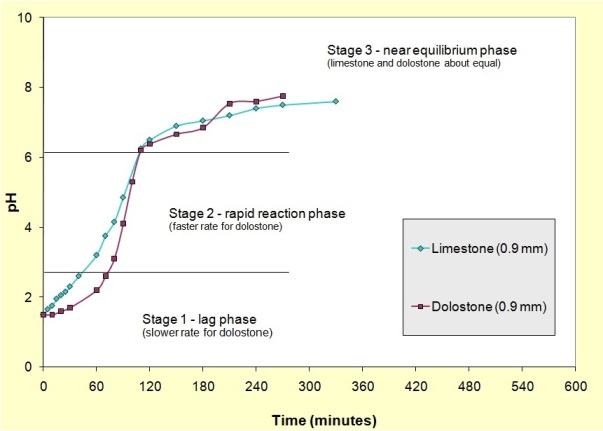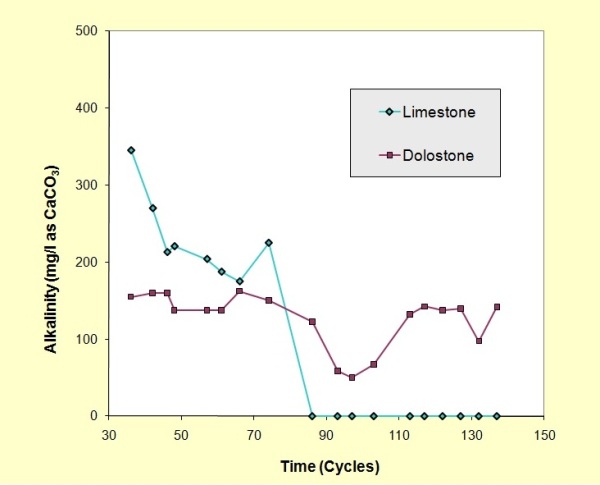Example: Acid mine drainage
The probem - Effective management of passive treatment systems
Constructed wetlands are a popular approach to treat acid release from old coal mines, especially on abandoned mine lands. Despite expectations, however, these systems require more maintenance than their name implies
Some issues with constructed wetlands:
1) wildlife - the wetland is an attractive habitat for beaver, who raise the outlet level to create a pond that drowns the vegetation and ends treatment. Muskrats in the Northern Hemisphere and capybara in the South feed extensively on cattail roots and will quickly devestate a wetland.
|
|
|
Beaver-flooded wetland, Indiana |
Muskrat house, Indiana |
Capybara family, Brazil |
2) Excess acidity in the influent water kills cattails.

Dead cattails in a wetland in Indiana, caused by new input of acid water
3) Clogging of anoxic limestone drains - a common remedy for excess acidity is to add an "anoxic limestone drain" ahead of the wetland system. However, these systems show a propensity for early failure, usually because they clog with mineral deposits such as gypsum.

Gypsum cementing two pieces of limestone fill in an anoxic limestone drain. Blue is remaining porosity.
The solution for anoxic drains - replace limestone with dolostone in fill
In a project for the Indiana Department of Reclamation, we investigated the substitution of dolostone for limestone as the fill for anoxic drains. Current practice is to use pure limestone because it is thought to react more quickly than magnesium-bearing limestones. Dolostone, should, however, yield only half the Ca and so be less prone to gypsum precipitation. On a 15-hour time scale, the typical retention time for an anoxic drain, the two rock types had identical total reaction rates:

Comparative reaction progress of limestone and dolostone granules exposed so sulfuric acid. Limestone starts faster, but dolostone catches up.
Thus limestone has no rate advantage over dolostone on the time scale of anoxic drains. We investigated efficiencies of the two rock types using paired columns packed with limestone and with dolostone granules. Breakthrough of acidity occured in 90 cycles with the limestone, but was never reached with dolostone after 135 cycles:

Comparative reaction progress of limestone and dolostone in packed columns granules filled daily with synthetic acid mine drainage including Al and Fe as well as sulfuric acid.
It can be seen that the dolostone not only avoided the clogging with gypsum precipitate, but suffered less from accumulation of Al and Fe compounds than did the limestone.